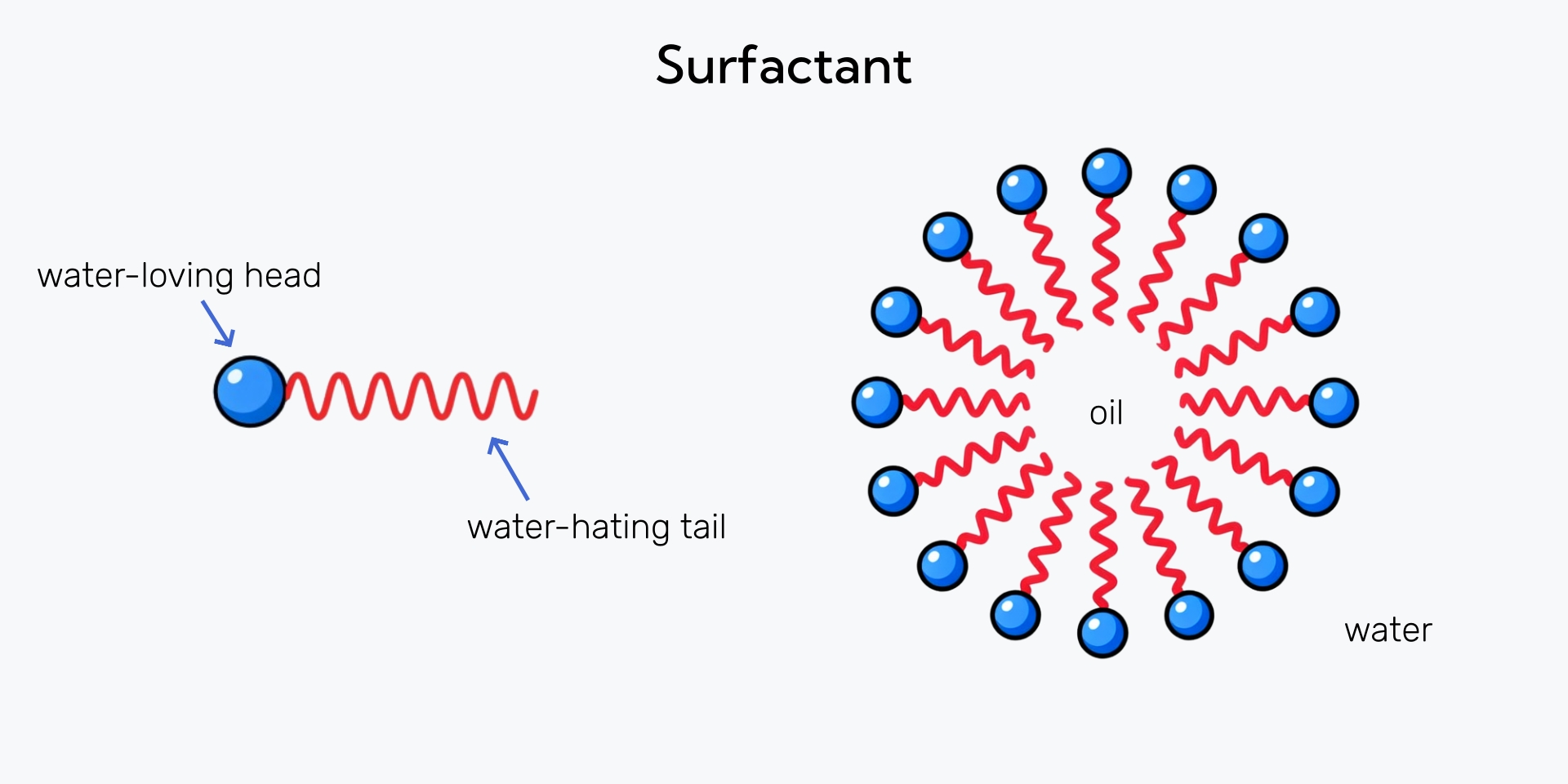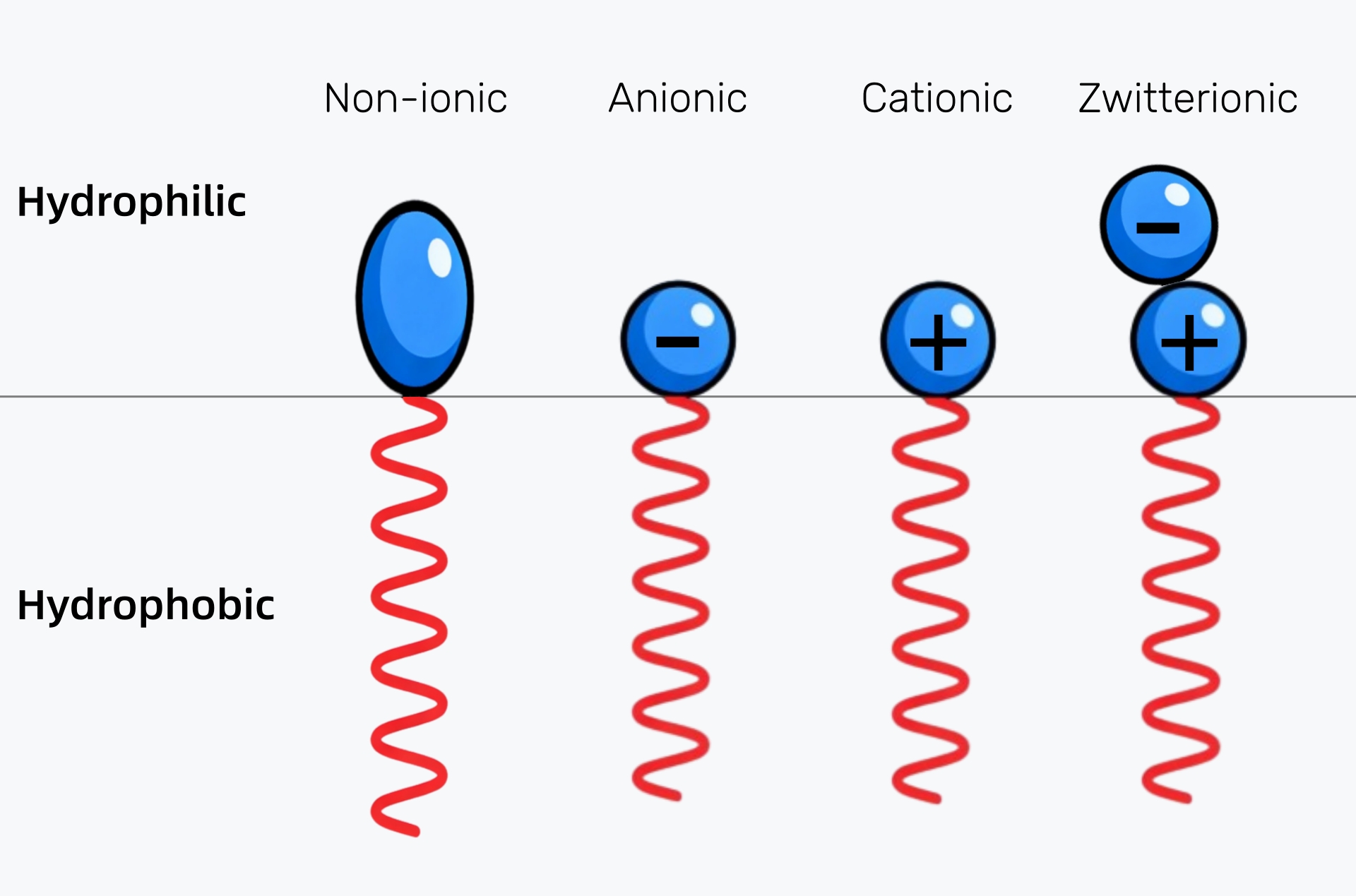We can produce 200,000 tons of chemical fiber oil and 200,000 tons of surfactants annually. We can supply more than one hundred types of products. Especially its polyester POY oil is an exclusively developed product in China and can totally replace imported hi-tech products.












Surfactants are substances that reduce the surface tension of a dissolved liquid. Specifically, they are compounds capable of lowering the surface tension or interfacial tension between two liquids, between a liquid and a gas, or between a liquid and a solid. The full term for surfactant is 'surface-active agent', though the abbreviated form is commonly used within the industry.

Its molecular structure possesses distinctive amphiphilic properties, featuring a hydrophilic group (head) at one end and a hydrophobic group (tail) at the other. This dual-natured structure enables surfactants to interact simultaneously with both polar substances (such as water) and non-polar substances (such as oil).

Based on the electrical charge of their hydrophilic groups, surfactants can be categorised into 4 types:
1. Non-ionic: Hydrophilic groups are uncharged, such as polyethylene glycol-type surfactants.Anionic: Hydrophilic groups carry a negative charge, such as soaps (metal salts of higher fatty acids) and sulphates.
2. Anionic: Hydrophilic groups carry a negative charge, such as soaps (metal salts of higher fatty acids) and sulphates.
3. Cationic: Hydrophilic groups carry a positive charge, such as amine salts.
4. Ampholytic(or zwitterionic): Molecules contain both cationic and anionic groups.
According to this standard, Hengxiang's products would be:
Non-ionic: Fatty Alcohol Polyoxyethylene Ether, Polyethylene Glycol, Polypropylene Glycol, Fatty Amine Polyoxyethylene Ether, Emulsifier Span & Tween, Propylene Glycol Block Polyether, Hydrogenated/Castor Oil Ethoxylated, Softener SG, Glycerol ethoxyethylene ether, Emulsifier OP
Anionic: Antistatic agent APEK, Antistatic agent AEO(n)-PK
Surfactants are not entirely harmful. Whether surfactants are detrimental to us depends primarily on their type, concentration, and method of exposure.
Surfactants are widely present in cleaning products such as shampoo, laundry detergent, and dishwashing liquid, where they function to reduce surface tension and aid in stain removal. At normal concentrations used in daily applications, most surfactants are safe and have undergone testing for skin irritation and toxicity.
However, if the concentration is too high or exposure lasts too long, adverse effects may occur:
Strong anionic surfactants (such as sodium lauryl sulfate) can damage the skin's lipid barrier, leading to dryness, itching, or allergic reactions. Spray or foam formulations may irritate the eyes or respiratory system. Certain cationic or nonionic surfactants possess some toxicity; accidental ingestion may cause symptoms like nausea and vomiting.
Overall, surfactants are not inherently harmful substances. When used at appropriate concentrations and under proper conditions—such as dilution, thorough rinsing, and avoiding prolonged skin contact—they are safe for human use.